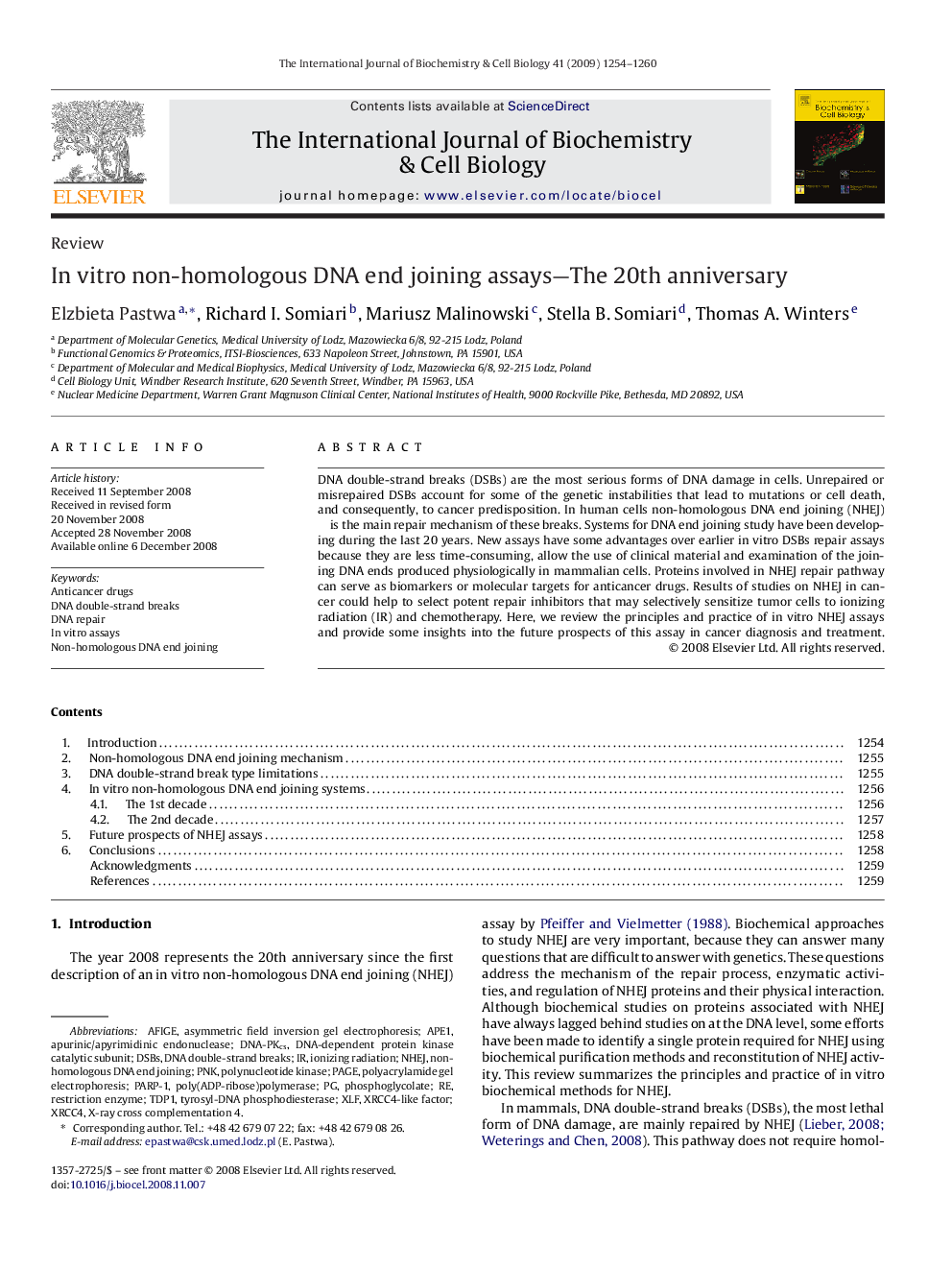| کد مقاله | کد نشریه | سال انتشار | مقاله انگلیسی | نسخه تمام متن |
|---|---|---|---|---|
| 1985030 | 1539952 | 2009 | 7 صفحه PDF | دانلود رایگان |

DNA double-strand breaks (DSBs) are the most serious forms of DNA damage in cells. Unrepaired or misrepaired DSBs account for some of the genetic instabilities that lead to mutations or cell death, and consequently, to cancer predisposition. In human cells non-homologous DNA end joining (NHEJ) is the main repair mechanism of these breaks. Systems for DNA end joining study have been developing during the last 20 years. New assays have some advantages over earlier in vitro DSBs repair assays because they are less time-consuming, allow the use of clinical material and examination of the joining DNA ends produced physiologically in mammalian cells. Proteins involved in NHEJ repair pathway can serve as biomarkers or molecular targets for anticancer drugs. Results of studies on NHEJ in cancer could help to select potent repair inhibitors that may selectively sensitize tumor cells to ionizing radiation (IR) and chemotherapy. Here, we review the principles and practice of in vitro NHEJ assays and provide some insights into the future prospects of this assay in cancer diagnosis and treatment.
Journal: The International Journal of Biochemistry & Cell Biology - Volume 41, Issue 6, June 2009, Pages 1254–1260